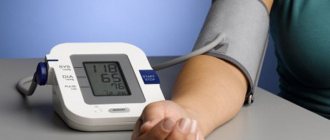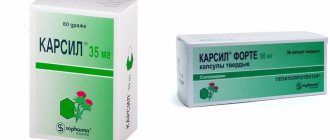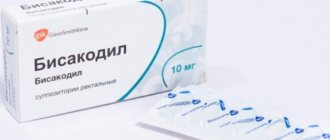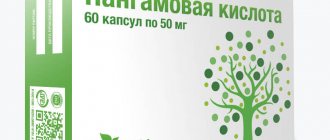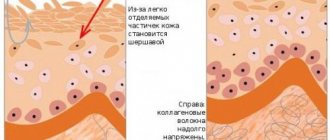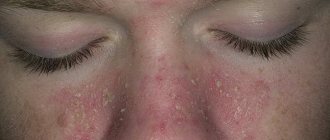How is boron beneficial for plants? How to properly use boric acid in the country? How can I feed different plants with it and use it to fight harmful insects? We will answer all questions about this essential microelement.
The range of applications of boric acid is quite wide. In medicine it acts as an antiseptic, in photography – as a component of the developer. Boric acid is used to get rid of cockroaches, produce glass, and use it in nuclear reactors and jewelry. But we are primarily interested in how boric acid is useful for plants and why it is needed in the country.
The use of boric acid by gardeners
The low price of the product and its effectiveness against many pathogens have increased the popularity of boric acid among gardeners and gardeners. In addition, the content of boron molecules has a beneficial effect on ovaries and fruit formation.
During the flowering period of vegetable and berry crops, dilute 2 g of powder in a bucket of water. The resulting solution is sprayed on plants during the flowering period. Tomatoes especially need such spraying. This procedure provides resistance to fungus and does not allow the buds to fall off without forming fruit.
In addition, this concentration of boric acid frees plants from aphids and other pests that interfere with the full development of leaves. The main enemy of densely planted beds is the slobber. This is an insect that binds leaf embryos with its secretion, in which eggs will be laid. The pest is capable of destroying the crop, preventing the green part of the plant from gaining strength and forming buds.
Gardeners recommend spraying apple trees and other fruit plants with boric acid to protect them from aphids, midges and caterpillars. This budget method has already shown its high efficiency, which is why boric acid powder often disappears from pharmacies in late April and early May. To avoid problems with purchasing powder, experienced gardeners recommend preparing for the summer season in advance and buying boric acid in February. Then the price of the powder may be even lower.
Signs of boron deficiency
Boron is an important microelement necessary for normal plant development. It has a positive effect on metabolism, promotes the production of chlorophyll, and helps roots “breathe.” The effects of boron starvation are easy to notice in dry weather. To identify boron deficiency, inspect the plant, paying special attention to young parts.
The plant urgently needs treatment with boric acid if the following “alarm signals” are detected:
- chlorotic spots on young foliage, leaf veins turn yellow;
- leaves become smaller, curl and fall off;
- apical buds inhibit growth, lateral buds, on the contrary, enhance;
- the plant blooms weakly, the fruits set poorly;
- fruit deformation (ugly shape);
- in pome crops, suberization of fruits is observed;
- death of bark on shoots or entire tops.
Plant growth slows down, and if measures are not taken in time, you may lose the harvest. But you shouldn’t overuse fertilizer: with an excess of boron, although plant fruits ripen faster, they are stored worse, and the leaves run the risk of getting burned.
Use in medicine
Medicine began to use boric acid immediately after its antiseptic properties became known. Back in the 19th century, healers prepared solutions from it to treat wounds. A distinctive feature of boric acid, in comparison with other antiseptic solutions, is its gentle action - it does not cause irritation, does not sting or burn. If the product accidentally gets into open areas of the wound, pain does not occur.
Otolaryngologists prescribe boric acid in the form of drops for instillation in the ears. First of all, this remedy effectively fights otitis externa if it was caused by a pathogen whose life activity began in the passage to the eardrum.
Dermatologists use boric acid as a remedy to relieve itching and prevent flaking in eczema. Psoriasis, being an incurable genetic disease, can be much easier if the formations on the body are treated with a solution of boric acid. The effect is due to the disinfection of wounds, between the scales of which fungi often begin to multiply. By excluding the addition of superinfection, it is possible to achieve minimal severity of neoplasms on the body. The wounds will not itch, bleed or become inflamed.
Acne is another indication for the use of boric acid solution. Any rash with purulent contents is the result of bacterial activity. Most often it is staphylococcus. Boric acid, as an antiseptic, stops the proliferation of bacteria and cleanses the skin of acne. Daily use of the solution can relieve skin problems in a week, and in severe cases in 10 days.
Boric acid can be found in many ointments for problematic facial skin. It is successfully combined with zinc, which enhances the antiseptic effect and dries out the skin. This combination copes well with diaper rash and weeping dermatitis.
If there is severe sweating on the feet, it is recommended to dilute a tablespoon of boric acid powder in 5 liters of warm water to prepare foot baths. Daily use of the product reduces sweating, eliminates unpleasant odors and prevents the risk of developing fungal infections between the fingers and on the nail plate.
Boric acid powder for solution for external use 10g in bags
Name
Boric acid powder 10g per pack.
Description
White or almost white crystalline powder, colorless shiny plates that are greasy to the touch, or white or almost white crystals.
Main active ingredient
Boric acid
Release form
Powder
pharmachologic effect
Boric acid has antiseptic and antifungal activity. Binds proteins (including enzymes) of the microbial cell, disrupts the permeability of the cell membrane. A 5% aqueous solution inhibits phagocytosis processes, a 2–4% solution inhibits the growth and development of bacteria. Has a slight irritant effect on granulation tissue.
Indications for use
Dermatitis, pyoderma, weeping eczema, diaper rash.
Directions for use and doses
Prescribed for skin diseases (weeping eczema, dermatitis, pyoderma, diaper rash) 3% aqueous solution for lotions. Dissolve the contents of a 2 g packet in 65–70 ml of hot boiled water, cool the solution to room temperature and use for lotions. To prepare a solution from an opened package weighing 10 g and 20 g, measure out half a teaspoon of powder and dissolve in 80–90 ml of hot boiled water, cool the solution to room temperature and use for lotions. An aqueous solution is prepared from the powder immediately before use (extempore). An open but not completely used bag of powder should be kept tightly closed. The duration of the course of treatment is no more than 3–5 days.
Use during pregnancy and lactation
Contraindicated.
Precautionary measures
An aqueous solution is prepared from the powder immediately before use (extempore). The solution of boric acid should not be applied to large surfaces of the body, nor should it be used for washing cavities and for acute inflammatory diseases of skin areas covered with hair. Avoid getting the medicine into your eyes. The solution should not be applied to damaged skin surfaces. It is recommended to avoid inhalation of powder particles when preparing the solution to avoid inhalation toxicity. To prevent inhalation of powder particles, it is recommended to use a respirator. It is recommended to immediately use the opened package to prepare the solution. An open but not completely used bag of powder should be kept tightly closed. It is recommended to store it out of the reach of children. Use in children. Contraindicated.
Interaction with other drugs
When used externally, cases of interaction with other drugs have not been described.
Contraindications
Hypersensitivity to the drug, impaired renal function, pregnancy, lactation, childhood, treatment of the mammary glands before feeding the child.
Compound
Boric acid – 10 g.
Overdose
An overdose can develop through accidental ingestion or inhalation of microparticles of boric acid powder, which is well absorbed through the gastrointestinal tract and through inhalation. An acute overdose may be accompanied by vomiting blue-green vomit, diarrhea, a drop in blood pressure, and a bright red skin rash. Other symptoms may include seizures, fever, epithelial desquamation, anuria, muscle twitching, and coma. Possible death. Boric acid is highly toxic in accidental overdose in infants and children. Treatment: gastric lavage (under endoscopy control, it is necessary to exclude the presence of bleeding), infusion therapy, symptomatic treatment, hemo- and peritoneal dialysis. Chronic overdose of boric acid in mammals leads to disruption of hematopoiesis, metabolic processes, reproductive function (signs of toxicity include damage to the seminiferous tubules, epithelial atrophy, decreased sperm count and testicular weight), and decreased testosterone levels in the blood. Boric acid exhibits reproductive toxicity properties and leads to impaired fertility and intrauterine development. There are reports of neurotoxicity. Effects on brain development (enlargement of the lateral ventricles, decrease in brain mass) were observed in rats at doses higher than those that cause impaired skeletal formation and other developmental defects. With prolonged use of the drug over large areas of skin, symptoms of chronic intoxication may occur: tissue swelling, exhaustion, stomatitis, eczema, menstrual irregularities, anemia, alopecia. The use of the drug should be stopped immediately, treatment should be symptomatic.
Side effect
Possible irritation to sensitive skin. Allergic reactions. It is possible (especially with overdose, long-term use, impaired renal function) to develop acute and chronic reactions - nausea, vomiting, headache, confusion, convulsions, diarrhea, skin rash, epithelial desquamation. Oliguria may develop. In some cases, states of shock occur. If the above adverse reactions or adverse reactions not listed in these instructions for medical use of the drug occur, you should consult a doctor.
Storage conditions
Store in a place protected from moisture at a temperature not exceeding 25 °C. Keep out of the reach of children.
special instructions
When boric acid is applied to open wounds, the chemical compounds are absorbed into the bloodstream. Long-term use of boric acid can lead to its accumulation in organs and tissues. It takes a long time for the substance to be removed from the body. Only half of the absorbed volume is excreted in the urine after 12 hours. The remaining amount will still be present in the body for a week.
If the accumulation of a substance in the body has reached dangerous levels, a person begins to experience symptoms of intoxication, including headache, vomiting, nausea, and confusion. And if taken orally, it can be fatal.
To avoid intoxication, it is necessary to avoid treating large area wounds, not to use the solution for longer than the specified period of time, and not to violate the proportions when preparing the product.
Boric acid: harmful properties in case of overdose
Boric acid belongs to the lowest, 4th class of hazardous substances. It does not harm humans if it comes into contact with the skin, but can accumulate in the body since boron is slowly excreted by the kidneys.
Excess boron in the soil is dangerous: it provokes burning of the lower leaves, drying out of the leaf edges - the leaves turn yellow, die and fall off. Symptoms of excess boron: dome-shaped leaves, curling of their edges inward, general yellowing of the leaf. Old leaves are the first to suffer. High boron content in forage plants leads to severe chronic diseases in animals.
Boric acid: 4 recipes for ant baits
- Pour 5 g of boric acid into half a glass of hot water (100 ml), dissolve, add 10 g of honey (teaspoon) or jam and 40 g (2 tbsp) sugar to the solution. Mix the mixture and pour into a flat container, which is best placed near ant paths. Cover the top from the rain with a piece of plastic.
- Grind 2 egg yolks with ½ tsp. boric acid, make small balls (the size of a pea or smaller) from the resulting mass and place them in key places.
- 1 tbsp. mix a spoonful of water with 2 tbsp. l. glycerin, add 1 tsp. honey, 1/3 tsp. boric acid and 1.5 tbsp. Sahara. Mix everything thoroughly and roll bait balls from the mixture. This recipe is good because the bait remains wet and soft for a long time.
- 3 medium boiled potatoes in their jackets, 3 boiled yolks, 10 g boric acid, 1 tsp. Sahara. Grind the peeled tubers and yolks, add boric acid and sugar to the mixture. Mix thoroughly again and roll the resulting dough into balls.
It is important to remember that increasing the amount of boric acid in the bait does not increase the effectiveness of its use - the ants will die before reaching the anthill, and the colony will simply raise other worker ants to replace it.
Other ways to control ants on your property.
Properties
Boric acid exhibits very weak acidic properties. It is relatively slightly soluble in water. Its acidic properties are due not to the abstraction of the H+ proton, but to the addition of a hydroxyl anion:
B(OH)3 + H2O → H[B(OH)4]
K
a = 5.8⋅10−10 mol/l;
p K
a = 9.24.
It is easily displaced from solutions of its salts by most other acids. Its salts, called borates, are usually produced from various polyboric acids, most often tetraboric acid H2B4O7, which is a much stronger acid than orthoboric acid.
B(OH)3 shows very weak signs of amphotericity, forming low-stable boron hydrogen sulfate B(HSO4)3.
When orthoboric acid is neutralized with alkalis in aqueous solutions, orthoborates containing the (BO3)3− ion are not formed, since orthoborates are hydrolyzed almost completely due to the too low formation constant [B(OH)4]−. Tetraborates, metaborates or salts of other polyboric acids are formed in solution:
2NaOH + 4H3BO3 ⟶ Na2B4O7 + 7H2O With an excess of alkali they can be converted into metaborates: 2NaOH + Na2B4O7 ⟶ 4NaBO2 + H2O
Meta- and tetraborates are hydrolyzed, but to a lesser extent (reactions opposite to those given).
In acidified aqueous solutions of borates, the following equilibria are established:
3H[B(OH)4] ⇄ H+ + [B3O3(OH)4]− + 5H2O [B3O3(OH)4]− + OH− ⇄ [B3O3(OH)5]2−
When heated, boric acid dissolves metal oxides, forming salts.
With alcohols in the presence of concentrated sulfuric acid it forms esters:
H3BO3 + 3CH3OH ⟶ 3H2O + B(OCH3)3
The formation of boron methyl ether B(OCH3)3 is a qualitative reaction to H3BO3 and boric acid salts; when ignited, boron methyl ether burns with a beautiful bright green flame.
Application
- In nuclear reactors as a neutron absorber dissolved in the coolant.
- Boron fertilizer.
- In laboratories it is used to prepare buffer solutions.
- In medicine - as a stand-alone disinfectant for adults
, and also in the form of a 2% solution - for washing the skin after exposure to alkalis. - Also, various combination preparations are produced based on boric acid (ATC group D08AD), for example Teymurov’s paste.
- In photography - as part of fine-grained developers and acidic fixers to create a weak acidic environment.
- It is registered in the food industry as food additive E284 (in Russia this additive is not included
in the list of approved products). - In jewelry - as the basis of fluxes for soldering gold-containing alloys.
- In foundries - a binder for acid lining of furnaces, a component for protecting the jet from oxidation when casting magnesium alloys.
- In everyday life - extermination of cockroaches, ants, bedbugs.
- In the production of ceramics, fiber optics, fiberglass, glass,
- As a fire retardant to protect wood,
- Contains electrolytes for copper and nickel plating.

